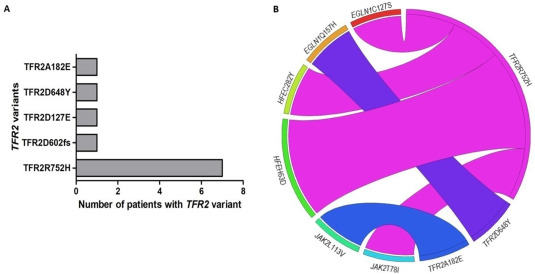
TFR2 gene alterations in idiopathic erythrocytosis reinforce a possible relation between erythrocytosis and iron metabolism


At present, most cases of sporadic absolute erythrocytosis remain without an etiologic demonstration, excluding acquired secondary forms, polycythemia vera, and hereditary erythrocytosis. Therefore, about 70% of all patients with erythrocytosis, receive a diagnosis of idiopathic erythrocytosis (IE) meaning that physicians failed to recognize the cause of the hemoglobin and hematocrit increase.1
